The great Ted Williams once watched three pitches go by without offering the slightest evidence of a swing. The umpire yelled “ball” each time, and—upset with those calls—the young catcher behind the plate turned and complained.
“You’re squeezing us, man!”
“Listen, bud,” the umpire responded, “when your pitcher throws a strike, Mr. Williams will let you know.”
Ted Williams was among the most potent hitters to ever play major league baseball. His hand-eye coordination and physical skills were superb, and he devoted nearly all of his substantial intellect to the game. The comedian Billy Crystal once met Mr. Williams on the field at Yankee Stadium, long after the baseball icon had retired. Crystal told him he had a thirty-year-old home movie of Williams striking out against Crystal’s beloved Yankees in the second game of a doubleheader, to which Williams replied, “Curveball, low and away. The catcher dropped the ball and tagged me, right?” He was right.
Because Williams devoted so much of his mind to the game he loved, the respect umpires gave him was understandable. If he didn't swing at a pitch, it probably wasn't a strike. Williams was also a skilled fly fisherman, so he likely gave the same deference to trout that the umpires gave to him. If a trout didn't take his fly, I suspect he knew it wasn't a strike.
I thought about that as I stood in the middle of the river, clipped off Clarence Roberts’ Drake, and replaced it with Ernie Borchers’. Clarence Roberts and Ernie Borchers aren’t household names like Ted Williams, unless the household is in Michigan’s Crawford or Roscommon Counties. They might be there, though, because every fly shop around the Au Sable River system sells the patterns they invented, and nearly every angler on those rivers carries at least a few of those flies in their boxes. Roberts’ fly has a deer-hair body tied with yellow thread to imitate a light-colored mayfly. Borchers’ has a turkey-quill body tied with black or brown thread to imitate a dark-colored mayfly. With those two flies in small, medium, and large sizes, you can fool most of the trout most of the time. But not all of the trout all of the time, because—after all—you are still fishing.
The previous evening I used an odd little emerger pattern and caught every fish I put it over. Tonight was different. Tonight, the trout ate every fly on the river except for the ones on the end of my line, and this was the tenth time I changed the pattern, the size, or both. My friend Dave was fishing downstream, and his story was the same. When another ring expanded just upstream, I turned and protested to the fish. You’re squeezing us, man. Then I cast the Borchers and begged the fish to eat as the little imitation drifted toward its target.
“He took the Borchers! He took the Borchers!”
I don’t usually yell when I hook a fish, but I don’t usually get squeezed like this either.
“Looks like a big fish,” Dave said as the line sped from my reel.
“Big, or foul hooked, or both,” I said.
After a couple of long runs, I realized I’d hooked the fish in its side, so I tightened up to break the line. Just then, though, the trout swam straight toward Dave and he tried to land it. But the fish rolled when Dave made his move, and the line snapped.
I fished alone the next evening on the same stretch of river. About an hour before sunset, a colossal cloud of mayflies hovered in the air, darkening the sky. Airplane silhouettes of dead bugs soon covered the water’s surface, inspiring the trout to gorge. I had a half dozen trout within casting distance, but I focused on a large one that stayed just out of range. Everyone who fishes this river enough eventually encounters the same situation. A monster of a fish surfaces like a porpoise as it gorges on mayfly spinners, rising perpendicularly to the current while swimming in a random zig-zag pattern up and down the river. And, like me, the obsessed anglers will ignore several good fish while chasing after their siren’s song.
Like a purposeful worker on a production line, I cast my fruitless fly, let it drift over the fish, clipped it off, replaced it with another, and did it all again.
Cast, drift, clip, tie. Cast, drift, clip, tie. Cast . . .
The big fish ignored nearly all of my offerings, forcefully rising to devour a natural fly just behind, in front, to the left, or to the right of mine. Finally, when I offered an extended-body pattern smaller than the others I had been using, the big fish rose toward the surface in pursuit of my fly, then gently pushed the counterfeit to the side.
You’re squeezing me, man.
Then, like a spurned lover on the rebound, I cast my fly in frustration toward the first new riser I saw, and that fish took.
With darkness descending, I hoped for a brief scuffle so I could get back after the big fish, but the fight lasted longer than the light. With the fish finally corralled in my net and resting in the water, I removed the fly from its jaw and reached for my camera. Then I noticed an odd growth on the fish's side.
Wait a minute, that's a fly. Not just any fly, that's a Borchers' Drake. Not just any Borchers' Drake. That's mine.
“Listen, bud,” the fish seemed to say. “I know you think we're being unreasonable out here, but we'll let you know when you throw a strike.”




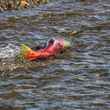











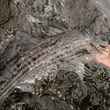




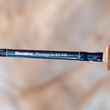





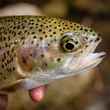

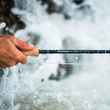
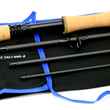
Comments
Doug P replied on Permalink
Well done. Nice read on a Sunday morning.
Virgil replied on Permalink
Great story.
Nate T. replied on Permalink
Love the Ted Williams anecdote. As a baseball fan and a fly fisherman, I also don’t find these past times mutually exclusive. Great read to put my mind right for my next outing. Thanks.
Grant replied on Permalink
Very well written sir. Great way to start the day. Thanks.
Pages